Racial justice work is hard.
There are many good approaches to addressing the historical and systemic injustices faced by people of color, but they all involve difficult tasks. Whether you’re bringing community agriculture back to a marginalized neighborhood, facilitating a multicultural public art project, mounting a national educational campaign, or any other initiative, there will be personalities, logistics, and budgets to deal with. There will be difficult conservations, delays, and disappointments. Sometimes, there will be burnout.
So, if it’s this tough, what motivates people to get and stay involved in racial justice work?
We posed this question to the six organizers in Cleveland, Ohio, who contributed to our Racial Justice Toolkit. Below, they tell us what catalyzed their interest in racial justice work, how they arrived at the work they do, and why it continues to be personally important to them.
Special shout-out to the several Cleveland “boomerangs” featured here: people who were born and raised in CLE, left for a time, and then deliberately returned to help make their city a better place. As ioby Leader Leah Lewis puts it:
“Cleveland is a town where you have a ton of boomerangs, those of us who have left and then come back. We’ve suffered greatly over the last five decades or so—at one point we were referred to as America’s armpit, and called ‘the mistake by the lake.’ There is something about this city, though, that produces really outstanding and exceptional human beings. I am a product of Cleveland. My education and my intellect and my creativity were forged in this city. I think there are a ton of us who return understanding how blessed we are, how gifted we are, and we’re determined to make a contribution to move this city forward into the 21st century.”

M. Carmen Lane
“I no longer believe that doing straight-up racial justice work will change anything.”
About Carmen:
– ioby project: ATNSC: Center for Healing & Creative Leadership
– Experiential educator, facilitator, trainer, consultant, and diversity practitioner
– Director of ATNSC: Center for Healing & Creative Leadership

What motivates you to get and stay involved in racial justice work?
“For me, it started in the early ’90s—that was the era of multiculturalism; the focus was more on racial harmony than racial justice. As a young person I experienced a training opportunity from what’s currently called the Diversity Center in Cleveland. … It was a retreat-style learning where kids from all over the county engaged in experiential activities and dialogues around difference. That was my first introduction into not just what racial justice is, but how to shift the conversation across differences.
“I’ve been doing anti-oppression work since I was 14 years old. Some of that shifted to using popular education methods in service of queer, labor, and anti-sexual violence movement work. I needed all of those experiences to really get clear on my own work. I share that to say simply that it is important to not judge any experience you’ve ever had in your life. Be curious about how to integrate it all to really get clear on your purpose, and find the thing that you need to do to impact the world in the way that you’re supposed to impact it.
“I also am a firm believer in intersectionality. While historically doing justice work that was single issue was helpful in some ways, I no longer believe that doing straight-up racial justice work will change anything. Nobody experiences their racial identity or their racialized experience in a way that isn’t embodied. There is a particular experience that Black women who are transgender have in this culture. There’s a particular experience of blackness when someone has a disability. There’s a particular experience that Black Muslims have. If we aren’t really getting curious about how race and class and gender and sexual orientation and gender identity is a dynamic within our communities, we are replicating and maintaining the status quo.”
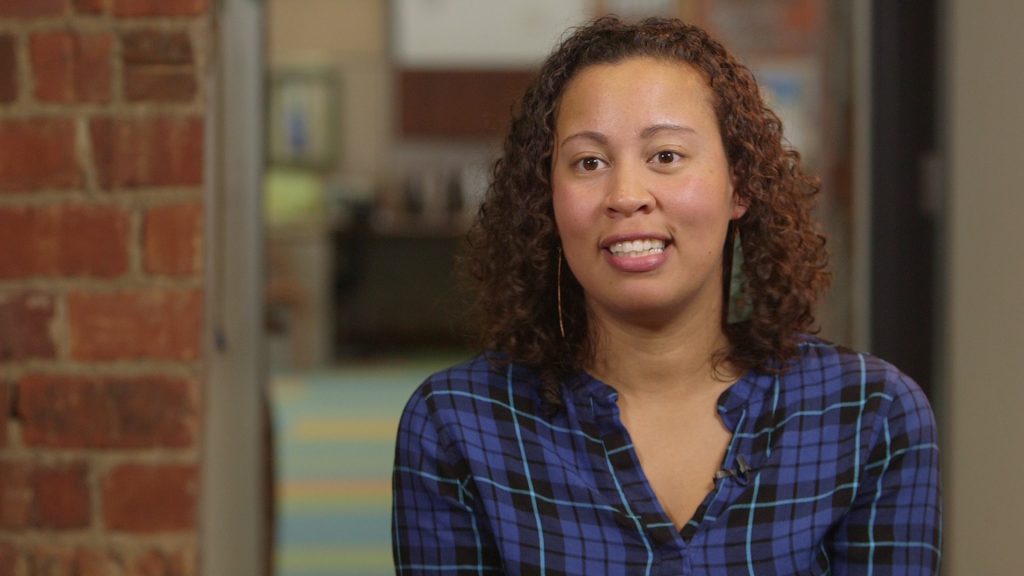
Indigo Bishop
“Tamir Rice was shot at the same rec center where I grew up playing sports.”
About Indigo:
– ioby Cleveland Action Strategist
– Certified social justice mediator
– Former community organizer with the Cleveland Foundation’s Neighborhood Connections, one of the largest grassroots grants programs in the country
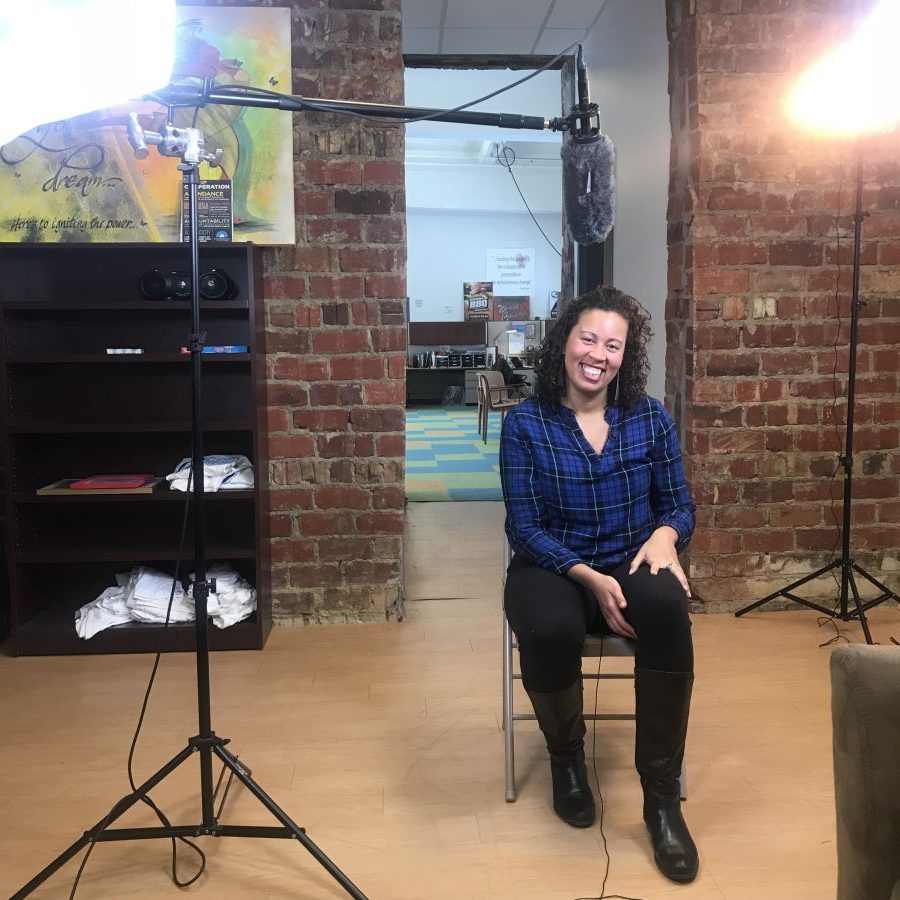
What motivates you to get and stay involved in racial justice work?
“Tamir Rice was shot at the same rec center where I grew up playing sports. It’s one thing to know about injustice intellectually, but this one hit my heart, not just my head. I am a proud auntie to three young black boys, and I need the world to be a better place for them—and for all kids—to come up in.
“There are a lot of activists in Cleveland who go way back. A lot of the original organizing was in response to redlining, policies around segregation, and the housing foreclosure crisis. There were a lot of systemic things that made Clevelanders really aware that there was this huge imbalance and that they were taking the brunt of it. A lot of the actions that they did in the ’60s and ’70s were powerful, but they didn’t really move the needle in a lot of the ways that people had hoped, and I think many folks became disenchanted with organizing. They kind of lost hope that their actions could make a significant change.
“Many of the organizers who I know are children and grandchildren of people who organized, and they have it in their blood a little, but it wasn’t really awoken until we hit this tipping point in the city, which for me is something that I noticed after the Tamir Rice shooting at Cudell. After the shooting, there was a huge increase in activism. People were really fed up and they wanted to do something to make a difference.”
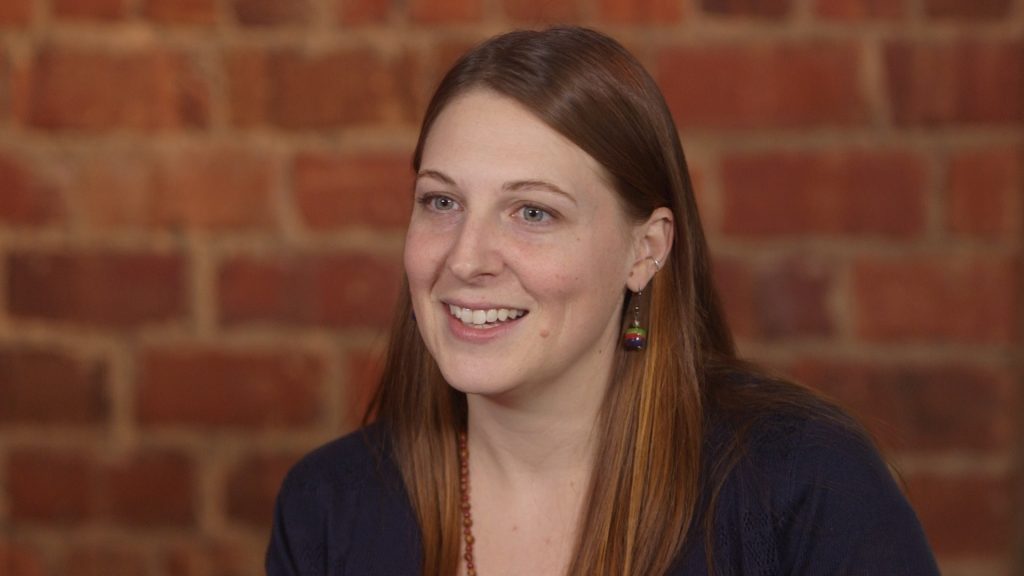
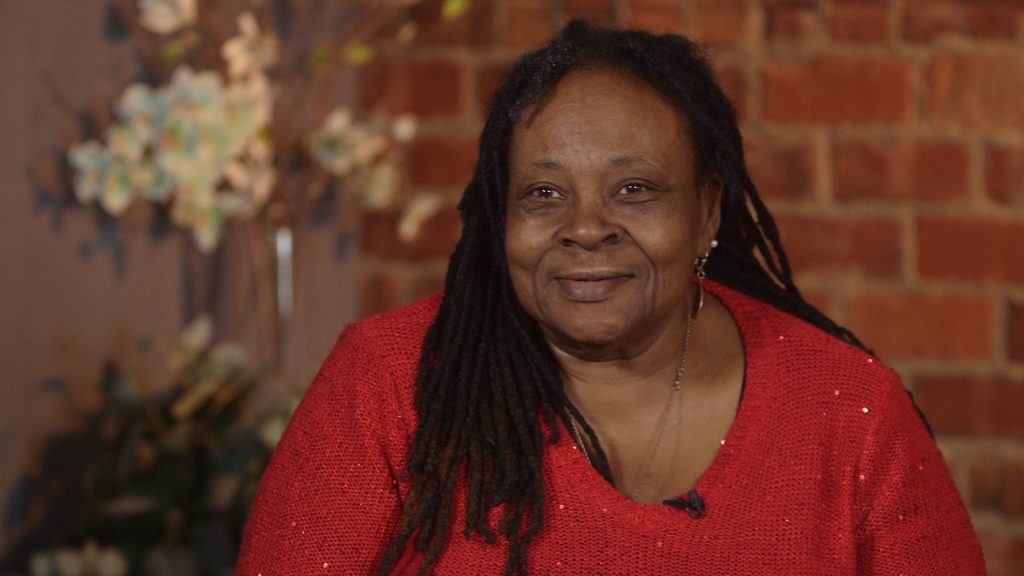
Kaela Geschke & Gwendolyn Garth
“I think if you’re involved in community work, you have to be involved in racial justice work because they are really inseparable, given the history of our country, policies, and practices.” – Kaela
“When you step outside yourself and outside your house, you can do something. You can make a difference.” – Gwen
About Kaela and Gwen:
– ioby project: A Bridge that Bridges
– Kaela: Wealth Initiatives Manager at the Cleveland Foundation’s Neighborhood Connections
– Gwen: Founder of Kings & Queens of Art, a grassroots collaboration of artists with a special focus on artists from the re-entry sector

What motivates you to get and stay involved in racial justice work?
Gwen: “I was born into [racial justice activism]. My mother was always active; she brought me to the March on Washington in 1963. I’ve always been active doing something in the neighborhood, but then I got involved in the wrong thing. I now have twenty years of recovery from alcohol and drugs, and when I found myself in tenth or eleventh year of sobriety, I got the urge to do more than just go to school, go to work, and asked myself once again, ‘What can I do in my neighborhood?’ Doing nothing was still part of the problem, so I wanted to work on the solution. When you step outside yourself and outside your house, you can do something. You can make a difference.”
Kaela: “I think if you’re involved in community work, you have to be involved in racial justice work because they are really inseparable, given the history of our country, policies and practices. They are completely intertwined, and I have a deep belief that whatever affects anyone of us affects all of us, and we’re not going to be able to get solutions unless we address the inequities of the past.”
Gwen: “To me, the bridge project is a way to bring people I wouldn’t ordinarily have seen on a day to day basis together—a diverse group of people having a difficult conversation. Art has always for me, as an artist, been a healer. The act of making or creating something is healing in itself. It broadened my horizons personally: I have a new set of friends I wouldn’t ordinarily have met. It has brought me out of that ‘them vs. us’ kind of thinking. It’s awfully hard to be mad at somebody when you’re painting. You forget your differences. Art was very vital to my own personal recovery—I’m a student of art therapy, and I see the therapeutic value in art. It gives you an opportunity to express yourself if you can’t find the words.”
Kaela: “I grew up in the city of Cleveland and I don’t know how often I interacted with people that were different than I was in terms of religion, race, and age. To be in spaces that are diverse, and to intentionally create those spaces, I think, is a radical act it in itself. It’s powerful to be able to have communication and dialogue with people that have had different lived experiences than you—especially in Cleveland because Cleveland is an extremely segregated city. I think we all need to purposely seek that out or we are going to stay in the same situation that we are in as city and probably as a country.”
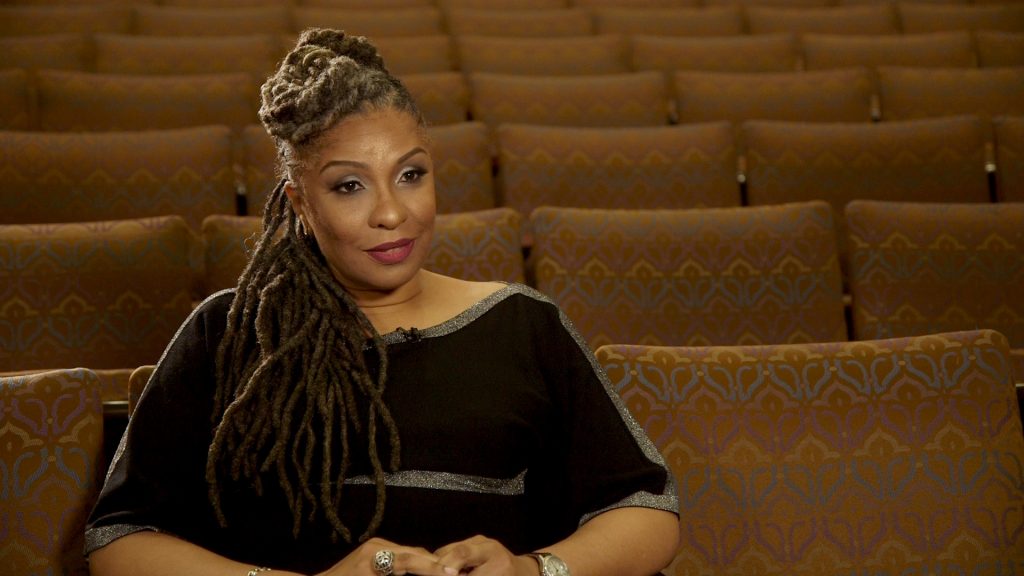
Leah Lewis
“I was raised to have a pure appreciation for human beings… I see racism as a pathology.”
About Leah:
– ioby project: The X’s and O’s of Race/ism, a Docu-series
– Founder and CEO of Three Butterflies Entertainment & Press, LLC
– Previously served her community as a pastor, councilwoman, professor, and community organizer

What motivates you to get and stay involved in racial justice work?
“I grew up here in the city of Cleveland and I was born in the mid ’60s. At that time most of the African Americans lived on the east side and a lot of people of European descent lived on the west and seldom did African Americans cross the river. When I went to high school, I got exposed to racism for the first time in my life.
“Prior to that, as a child, I had watched a film called Roots. That’s where I became exposed to this concept of the ideology of white supremacy and African inferiority—it really captured the violence of U.S. chattel slavery. That was the first time in my life where I saw people treated in such an inhumane fashion simply because of the color of their skin, and it made an indelible impression upon me. When I went to high school and had a firsthand experience with racism, it changed me in ways that I had not anticipated.
“I was raised to have a pure appreciation for human beings, so to experience racism, though it changed me, it did not take away from my humanity and my respect for the human race. Because I see racism as a pathology, I’m dedicated to doing work that will help people come to terms with misinformation and misnomers, and to help people come to terms with their own social ills and fears. That’s why I’ve decided to do work surrounding race.”

Michele Crawford
“I think Cleveland is starting to realize that we’re special.”
About Michele:
– ioby project: Design Justice Platform + Design As Protest
– Designer with a special interest in architecture and interiors
– Winner of 2016 American Institute of Architects Cleveland Chapter Activism Award

What motivates you to get and stay involved in racial justice work?
“I grew up just east of the city of Cleveland, and moved back to Cleveland about four years ago. I got my master’s of architecture from the school of the Art Institute in Chicago. It was during my time in Chicago that I became interested in the politics of the city, and what a city is built on. I lived in a west side suburb, but traveled downtown to the Loop every day, taking the green line train. From my repeated journeys back and forth every day, at different hours, I became more aware of how the city changed, and was really intrigued at why certain parts of the city looked one way, and certain parts of the city looked a different way. I wanted to break it down and investigate what caused that.
“I became more aware of what redlining was, and the history of cities, and how different people lived there at different times, and then left, and then a new community of folks moved in. I became interested in investment in cities, and who had access to those investments, and how that changed depending on what you looked like, and where you came from. I think we’re forced to live with decisions that were made historically—it wasn’t always fair, but it’s our reality. I wanted to challenge myself to figure out what could I do about it individually, and find out who else is working on these types of issues, and figure out how we can come together and unite to change the narrative.
“Cleveland is my hometown. I care about what happens here. I live here now, so I feel particularly motivated to be involved with community issues that are going on in my own neighborhood, and in surrounding neighborhoods. I think Cleveland is starting to realize that we’re special. There’s a lot of development going on, so being really intentional about all neighborhoods, and inclusive in all neighborhoods collectively, will make the whole city stronger.”